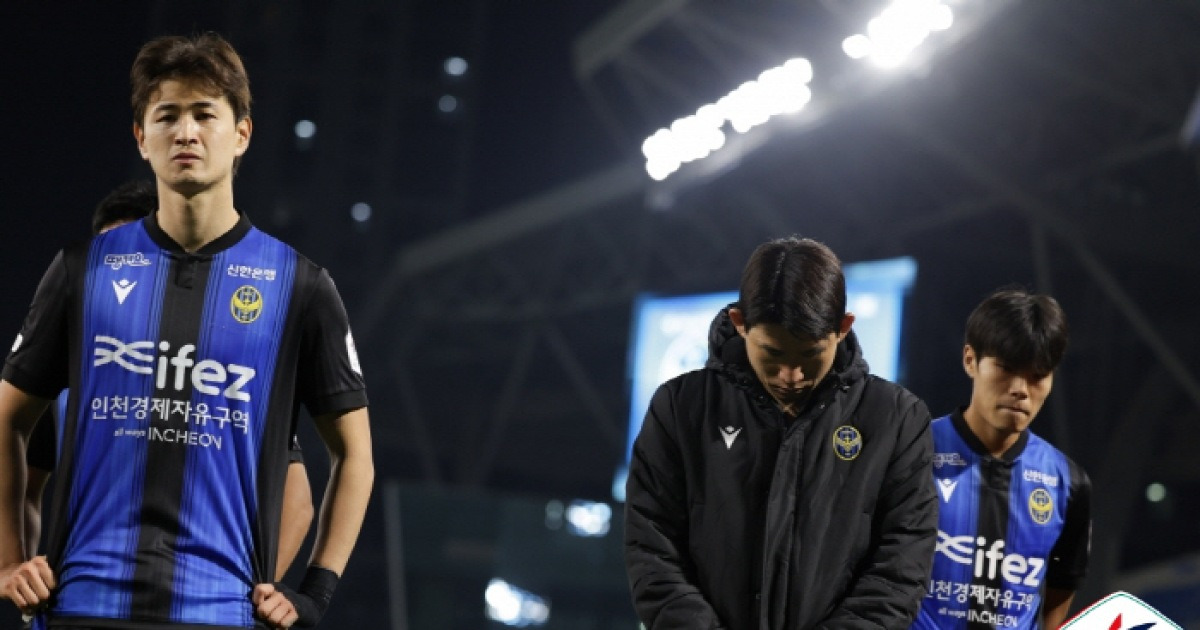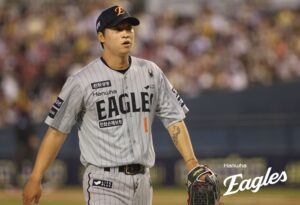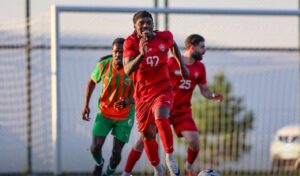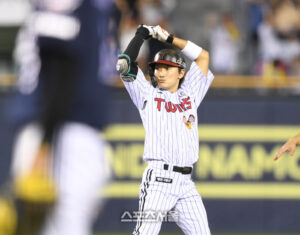The reason why ‘Incheon’s relegation and Jeonbuk’s sluggish performance’ are never satisfactory… K-League, where box office cards are disappearing one by one


Photo provided by Korea Professional Football League
(Sports Chosun Reporter Yoon Jin-man) ‘In Part 2, Gaegwacheon Line, row and go to Part 2.’ When Incheon’s first relegation was confirmed in the 37th round of ‘Hana Bank K League 1 2024’ between Incheon and Daejeon held at Incheon Soccer Stadium on the 10th, ridicule poured in both inside and outside the stadium. They even ‘summoned’ a water bottle from an Incheon fan who flew into the stadium and a taunting hanging hanging that had been aimed at a specific team in the past. What happened during Suwon Samsung’s relegation in 2023 was repeated again this year. Since the creation of the sport of soccer, there has always been a fan culture in which rivals hope to fail in some way. Even if another team had been in the place where Incheon was relegated, the atmosphere would not have been much different.
From a league perspective, Incheon’s relegation is close to a loss. Incheon’s average home attendance with the final game remaining this season has exceeded 10,000 (10,950) for the first time since the club was founded. The only teams that exceeded 10,000 people in terms of ratings are Seoul (27,838), Ulsan (18,307), Jeonbuk (15,560), Daegu (11,232), and Incheon. In line with Incheon’s good performance of advancing to the first Asian Champions League in 2023, the number of spectators rose sharply to 5,261 in 2022, 8,938 in 2023, and 10,950 in 2024. In this trend, K-League 1 was able to exceed 3 million cumulative spectators for two consecutive seasons. Incheon has tried to solidify its position as an emerging powerhouse by increasing investment over the past two to three years and acquiring notable players. In that situation, we suffered relegation.
The fact that the Gyeongin Derby (or Inkyung Derby) was ‘closed’ due to Incheon’s relegation could be a factor that pours cold water on the league’s success. On March 10, the season’s first rivalry game held at the Seoul World Cup Stadium drew a huge crowd of 51,670, with the greatest anticipation being that it was Jesse Lingard’s (Seoul) debut, but Seoul’s home opening opponent was rival Incheon. The analysis is that this also made the light fans move their feet. In the derby held in Incheon on May and 7th respectively, close to 15,000 fans visited and heated up the stadium. In the past three seasons, Incheon’s opponents with the largest number of spectators each season were all Seoul. From Seoul’s perspective, Suwon was relegated last year and was unable to hold the Super Match, which is a box office guarantee, this year, and next year it was unable to hold the Gyeongin Derby, losing its two biggest rivals one after another. The departure of a difficult opposing team is a welcome element, but it also takes away from the excitement. Anyang, which was promoted for the first time since its founding this year, is irritating Seoul with issues such as relocation, but Seoul’s response is actually lukewarm. It is unclear how successful the Seoul-Anyang match will be.
Jeonbuk’s historic sluggish performance, which fell into the promotion playoffs for the first time since its founding, is not pleasing to the league as a whole. The number of spectators for the first Hyundai Garden Derby of the season held in Jeonju last March was 25,782, but in the Hyundai Garden Derby held at the same stadium in July, when Jeonbuk’s poor performance continued, the number decreased by nearly 7,000 to 18,573. This is compared to the 27,797 people who attended the Hyundai Derby held in Jeonju in June last year. It can be seen that Jeonbuk’s poor performance had some influence on the success of the Hyundai Derby. Fans were distant from the Hyundai Derby, which was the best in terms of the club’s investment scale and objective power, and fought for the lead for four consecutive seasons from 2019 to 2022. Ulsan, which was looking at Jeonbuk’s 5th consecutive loss, recently changed the course by winning 3rd consecutive loss, and Jeonbuk is about to advance to the promotion playoffs.
Looking at the K-League as a whole, the audience pie clearly appears to be growing larger. Since the COVID-19 pandemic, the combined paid audience for K League 1 and 2 has exceeded 3 million for the past two consecutive seasons. However, if you look closely, it is unfortunate that the major derbies are decreasing one by one.
Reporter Yoon Jin-man yoonjinman@sportschosun.com
Copyright © Sports Chosun. Reproduction and redistribution prohibited.




